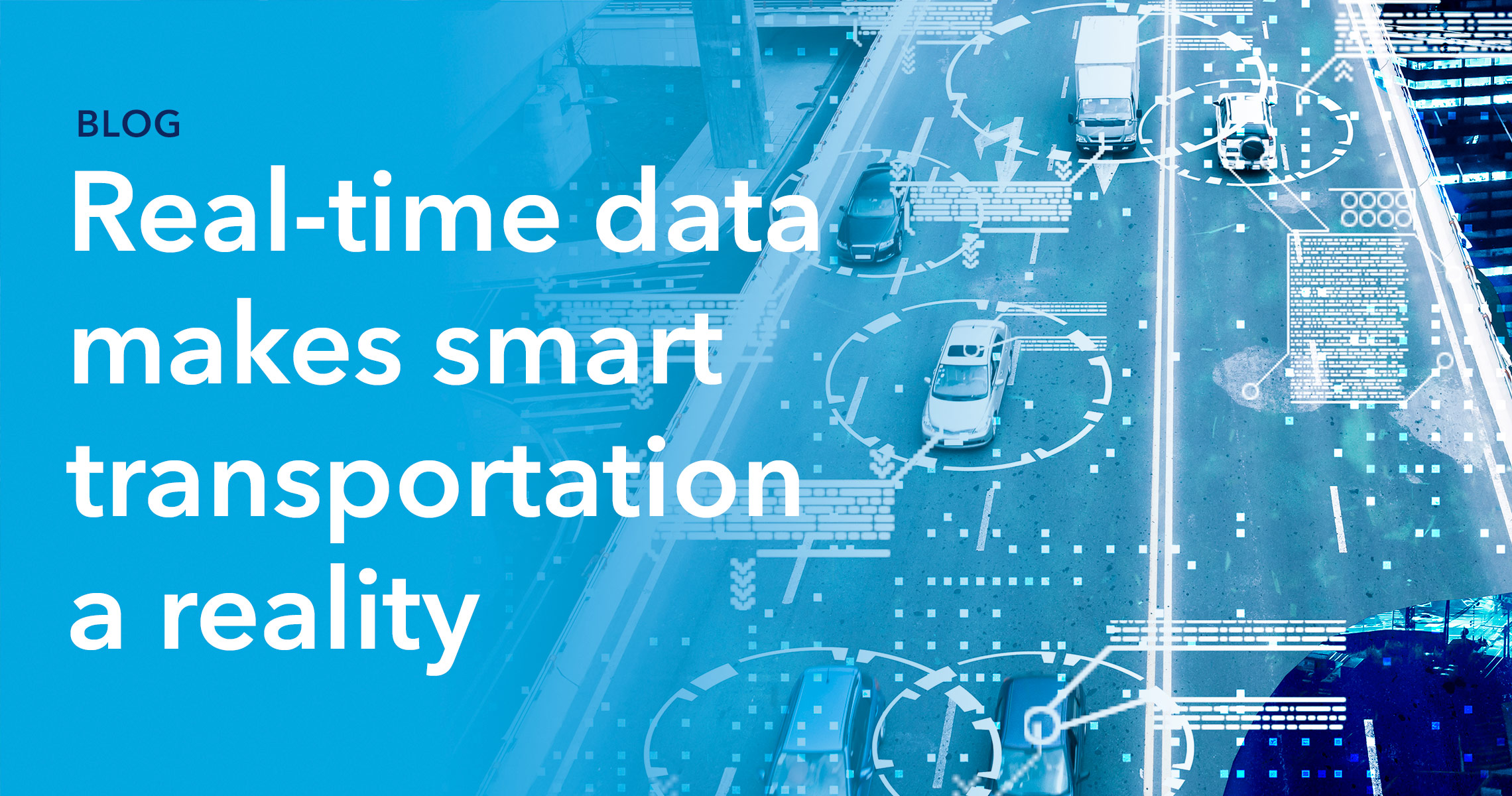How real-time data powers smart transportation networks
The world’s population is growing, and it’s becoming increasingly more urban. As such, the challenge of reducing congestion and carbon emissions is significant. One way to accomplish this is by creating smart transportation networks that leverage mass data collection and new, “greener” technologies to get people where they want to go more quickly and sustainably.
Real-time data collection, sharing, and processing are enabling considerable advances in how people move and how smart transportation networks are built to adapt to these movements. There are a number of means used to collect real-time data, such as:
- IoT sensors: Dispersed networks of IoT devices measure and transmit data on traffic and other transport metrics to central control centers. They can collect data in a variety of formats, including cameras, infrared, and emissions.
- GPS and GIS data: Tracking individuals using GPS provides real-time spatial and temporal data. This includes how fast someone is moving, their total travel distance, and how many people are traveling in total (based on average GPS users per traveling cohort).
- Smartphone data: Smartphone usage is even more widespread than GPS and includes a number of ways for data to be gathered. Bluetooth IoT sensors, for example, can be spread along a smart transportation network to identify and monitor the distance and movement of travelers.
- Smart transportation cards: Many cities now use integrated transport cards for all public transport networks, such as New York’s OMNY or London’s Oyster card. The connected IoT sensors not only calculate a person’s account balance and charge them the correct fare, but they also collect huge datasets about the number and times of journeys taken.
- Call Detail Records (CDR): Triangulated data collected from cell towers can accurately track the successive locations of travelers to monitor travel times. This provides useful time-series and real-time data on where people are and how fast they’re moving.
- Connected vehicles: The growth in connected vehicles feeds into improved data in several areas. With integrated GPS, Bluetooth and call functionalities as standard, connected cars will play an ever-greater role in the growth of smart transportation networks in years to come.
Smart transportation in action
Smart transportation networks collect a wealth of real-time and time-series data which is fed back to control centers for processing. This data then powers a range of innovations to improve traffic flow and congestion straight away, as well as helping long-term planning decisions. Here are three key smart transportation innovations.
1. Smart traffic management
So far, one of the primary examples of smart transportation networks in action is in how they measure, inform, and attempt to alleviate traffic congestion. These include:
- Traffic zones: IoT sensors and other data collection can rapidly identify the most congested areas of a city. This allows travelers to choose a different route to their destination or, judging by how heavy the traffic is, to delay their journey until the worst of the congestion has passed.
- Traveler information: Information boards on roads or sent directly to travelers’ devices can provide real-time updates on what the traffic situation looks like ahead. This can include live updates on events that have just happened, such as crashes or breakdowns, as well as ongoing information on journey times to given points. The speedy relay of data through a central processing point and back to the end-user is a relatable example of DataOps in action.
- Traffic flow: Real-time data on traffic movement from IoT detectors allows managers to implement immediate actions to alleviate congestion. As well as informing travelers of issues and advising them of alternative routes, they can also change traffic light patterns to improve flows in certain directions and spread time delays around to other routes.
2. Autonomous vehicle shuttles
While autonomous vehicles have not yet had the uptake that some had expected, one area in which they have shown promise is while integrated in smart transportation networks. Columbus, Ohio and Chongqing, China have both demonstrated the potential of autonomous public transport, leveraging networks of sensors and on-board cameras to ensure safety as well as effective functioning of the systems.
3. Freight transportation
The cost pressures of transporting freight as well as working conditions are two constant issues for the freight industry. While outside of the general urban areas where smart transportation networks are generally found, locations such as Kansas City and Wyoming have become leading testing grounds for the potential of smart freight transport. Along with making it easier for trucks to find each other to ride in convoy, which reduces fuel consumption, autonomous steering controls can reduce strain on drivers.
How Intertrust Platform can help
Smart transportation networks have numerous ways of collecting real-time data on traffic and travelers. This allows traffic managers to alleviate congestion and keep travelers informed of situations as they move, while in other contexts it can help reduce freight transport costs or provide autonomous public transport. All data collection has value, and for smart transportation networks specifically, time-series data is vital for long-term and major infrastructure projects.
With so much data being collected and shared between different entities, data security is a significant concern and friction point for smart transportation networks. By leveraging virtualized data platforms, such as Intertrust Platform, which give administrators complete access control over all data assets, down to row and column level, complete data sharing can be enabled with minimal fear of data breaches or oversharing. Additionally, since all analysis is performed in containerized secure execution environments, another attack surface for would-be data thieves is removed.
To find out more about how Intertrust’s secure data exchange platform is powering the smart transportation networks of the future, you can read more here or talk to our team.

